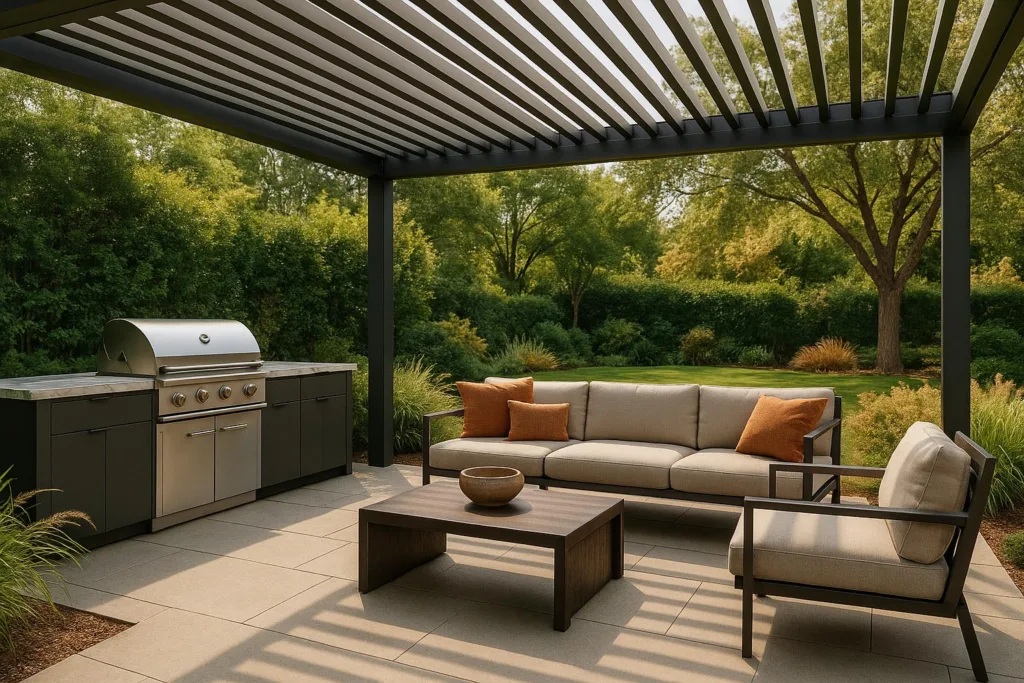A comprehensive analysis of quoting inefficiencies affecting the outdoor living industry
Outdoor living businesses lose an average of $126,755+ annually through inefficient quoting processes, according to industry data compiled from 117 companies.
This revenue loss occurs daily through delayed quote responses, manual calculation errors, and prospect abandonment during extended wait periods.
The Daily Mathematics of Revenue Loss
Each manual quote requires 3+ hours of preparation time plus $250+ for professional renders. During this delay, prospects choose faster competitors or abandon purchase plans entirely.
The measurable impact: $347 in lost revenue per day, calculated as follows:
- Average project value: $8,500
- Delayed responses lose: 2.4 prospects daily
- Potential conversion rate: 17.2%
- Daily opportunity cost: $347
Most outdoor businesses convert 4% of prospects. Companies using automated systems achieve 17.2% conversion rates with identical lead quality.
Industry Conversion Rates: The Data
Research across the outdoor living sector reveals consistent patterns:
- Manual quoting systems: 4% average conversion rate
- Automated quoting systems: 17.2% average conversion rate
- Customer engagement time: 2 minutes (manual) vs. 8+ minutes (automated)
- Pricing accuracy: 67% (manual) vs. 98% (automated)
These figures represent data from businesses processing 20+ leads monthly across pergola, awning, carport, and garden room sectors.
The Three Critical Failure Points
Manual quoting creates predictable failure patterns at three stages:
Quote Preparation Time
Three-hour quote preparation creates response delays of 24-72 hours. Industry research shows prospect interest declining 23% per day after initial inquiry.
Pricing Accuracy Problems
Manual calculations achieve 67% accuracy rates. Pricing errors force contract renegotiations or margin compression to maintain customer relationships.
Customer Disengagement
Prospects spend average 2 minutes reviewing manual quotes before decision-making. This brief engagement period provides insufficient time for emotional investment in projects.
Secondary Cost Analysis
Beyond direct revenue loss, manual quoting generates additional expenses:
Labor Inefficiency
Quote preparation consumes 15-20% of productive work hours during peak seasons. This creates bottlenecks preventing business growth during optimal periods.
Competitive Disadvantage
Companies responding within 1 hour secure 65% more projects than those requiring 24+ hour response times, according to industry timing studies.
Seasonal Cash Flow Impact
Manual processes slow during high-demand periods, creating revenue concentration in fewer months and seasonal cash flow challenges.
Case Study: Spa Solutions Transformation
Spa Solutions documented their transition from manual to automated quoting systems over 90 days:
Before Implementation:
- Conversion rate: 4%
- Quote preparation time: 3+ hours per prospect
- Pricing accuracy: 67%
- Customer engagement: 2 minutes average
After Implementation:
- Conversion rate: 17.2%
- Quote preparation time: 30 seconds per prospect
- Pricing accuracy: 98%
- Customer engagement: 8+ minutes average
90-Day Results:
- 87 qualified leads processed
- 15 sales completed (low season)
- $250+ render costs eliminated per quote
- Weekend work eliminated for quote preparation
Dylan Ayer, CEO: “We do not spend time on quotes, as they’re done automatically. Our inquiry-to-customer conversion rate is 17.2% thanks to a great online experience.”
The Automation Solution
117 outdoor businesses have implemented 3D configurator systems that eliminate manual quoting:
Process Changes:
- Customers design products online using 3D interfaces
- Pricing calculations occur automatically based on selections
- Professional quotes generate in 30 seconds with accurate renders
- Sales consultations begin with pre-qualified, engaged prospects
Measurable Outcomes:
- Quote volume increases 300% with identical staffing
- Customer engagement time increases from 2 to 8+ minutes
- Pricing accuracy improves from 67% to 98%
- Conversion rates improve from 4% to 17.2%
Implementation Across Product Categories
The automated quoting approach works across outdoor living categories:
- Pergolas and gazebos
- Awnings and shade structures
- Carports and storage buildings
- Garden rooms and pavilions
- Outdoor kitchens and fire features
Each category shows similar conversion rate improvements when customers design products themselves rather than reviewing static proposals.
Market Adoption Trends
Early adopters of automated quoting systems report competitive advantages in their local markets:
- Faster response times than manual competitors
- Higher quality leads arriving pre-qualified
- Reduced operational overhead during peak seasons
- Improved team productivity and job satisfaction
Late adopters face increasing competitive pressure as automated systems become standard in progressive markets.
The Revenue Recovery Opportunity
Businesses currently losing $347 daily through manual quoting can recover this revenue through systematic automation.
The implementation requires 3D configurator technology, automated pricing algorithms, and customer interface design. Setup time averages 1-2 days with ongoing optimization over 90 days.
Return on investment calculations show break-even within 30-45 days for businesses processing 20+ leads monthly.
Conclusion
The $126,755+ annual revenue loss through manual quoting represents a solvable business problem with documented solutions.
117 companies have eliminated this revenue drain using automated systems. Their results provide measurable proof that conversion rates can increase from 4% to 17.2% while reducing operational overhead.
The question for outdoor living business owners:
How long will you accept daily revenue losses of $347 when proven solutions exist?

